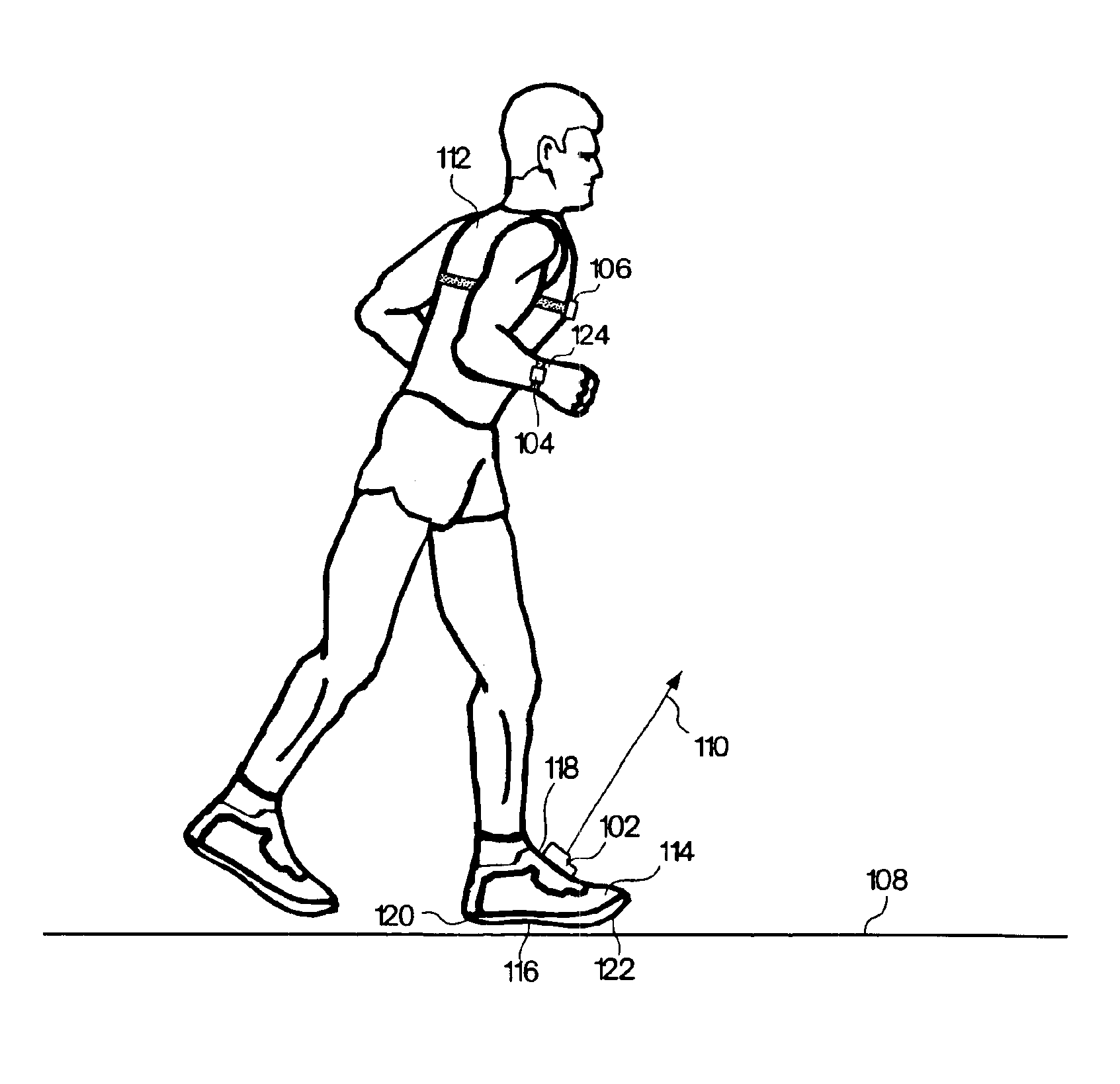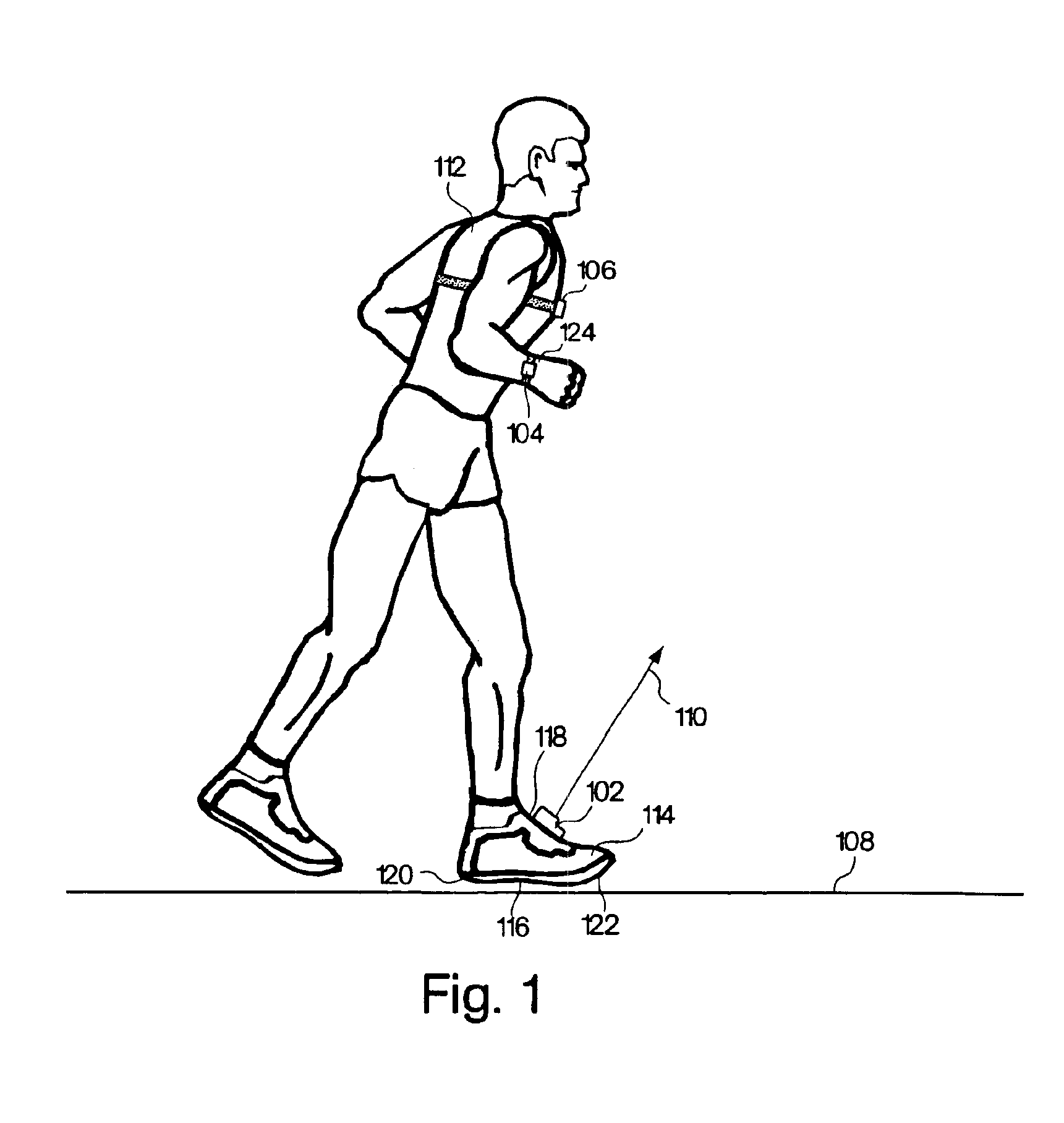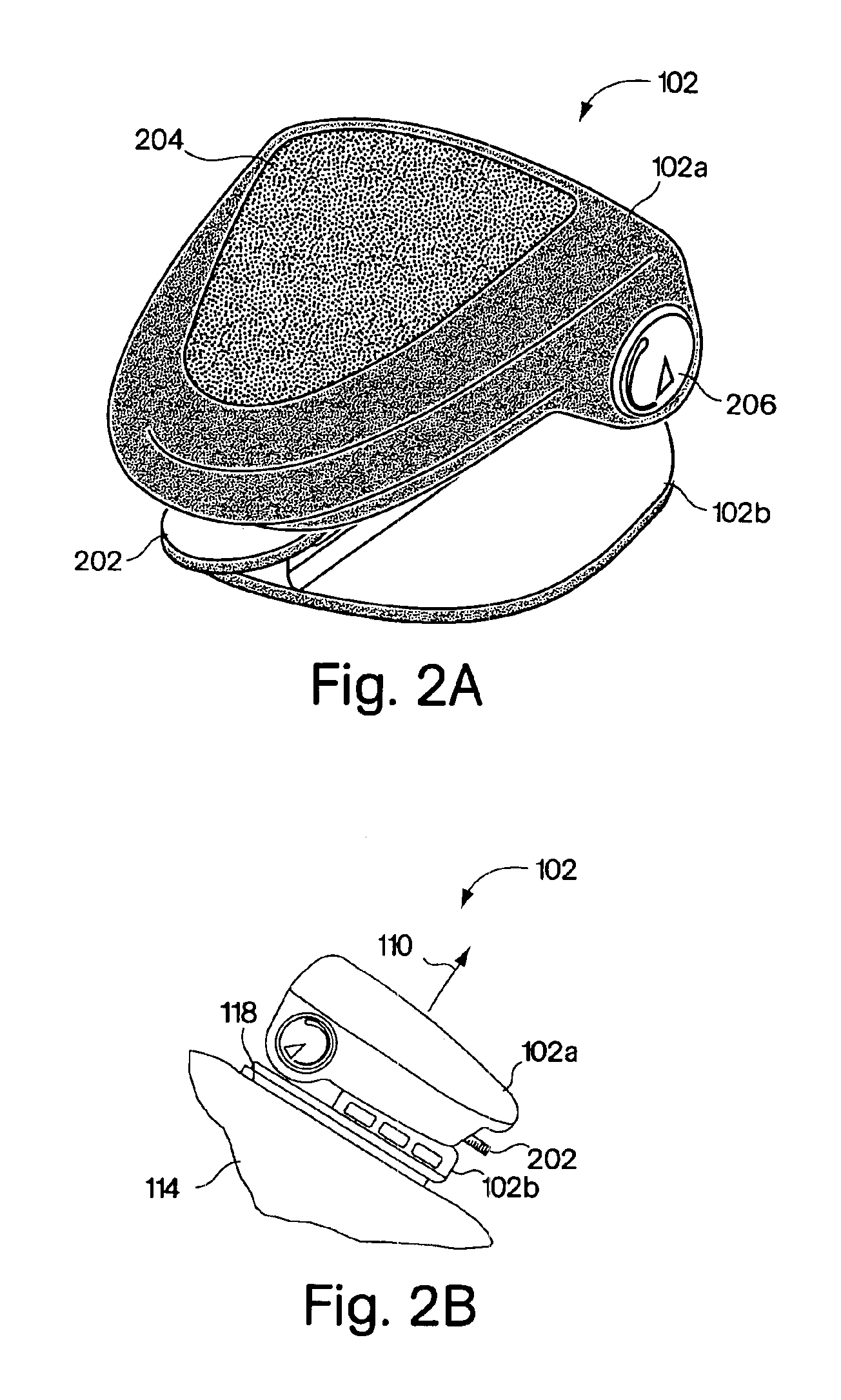Monitoring activity of a user in locomotion on foot
a technology for locomotion and activity monitoring, applied in the direction of electric unknown time interval measurement, speed/acceleration/shock instrument details, setting time indication, etc., can solve the problems of high impact environment, frequent failure, and inaccurate foot contact time (tc) measuremen
- Summary
- Abstract
- Description
- Claims
- Application Information
AI Technical Summary
Benefits of technology
Problems solved by technology
Method used
Image
Examples
Embodiment Construction
An illustrative embodiment of a system for monitoring activity of a user in locomotion is shown in FIG. 1. As shown, the system includes a foot-mounted unit 102, a wrist-mounted unit 104, and a chest-mounted unit 106, all attached to a user 112 who is in locomotion (i.e., walking or running) on a surface 108. In accordance with one aspect of the present invention, the foot-mounted unit 102 includes a sensor for sensing motion of a foot 114 of the user 112.
The sensor included in the foot-mounted unit 102 may be any of a number of devices capable of sensing the motion of the user's foot 114, and the invention is not limited to the use of any particular type of sensor. In one illustrative embodiment, for example, the foot-mounted unit 102 includes a solid-state accelerometer that senses acceleration along an acceleration sensing axis 10, as shown in FIG. 1. In another embodiment, the sensor includes a low-cost accelerometer such as that disclosed in co-pending patent application Ser. N...
PUM
 Login to View More
Login to View More Abstract
Description
Claims
Application Information
 Login to View More
Login to View More - R&D
- Intellectual Property
- Life Sciences
- Materials
- Tech Scout
- Unparalleled Data Quality
- Higher Quality Content
- 60% Fewer Hallucinations
Browse by: Latest US Patents, China's latest patents, Technical Efficacy Thesaurus, Application Domain, Technology Topic, Popular Technical Reports.
© 2025 PatSnap. All rights reserved.Legal|Privacy policy|Modern Slavery Act Transparency Statement|Sitemap|About US| Contact US: help@patsnap.com



